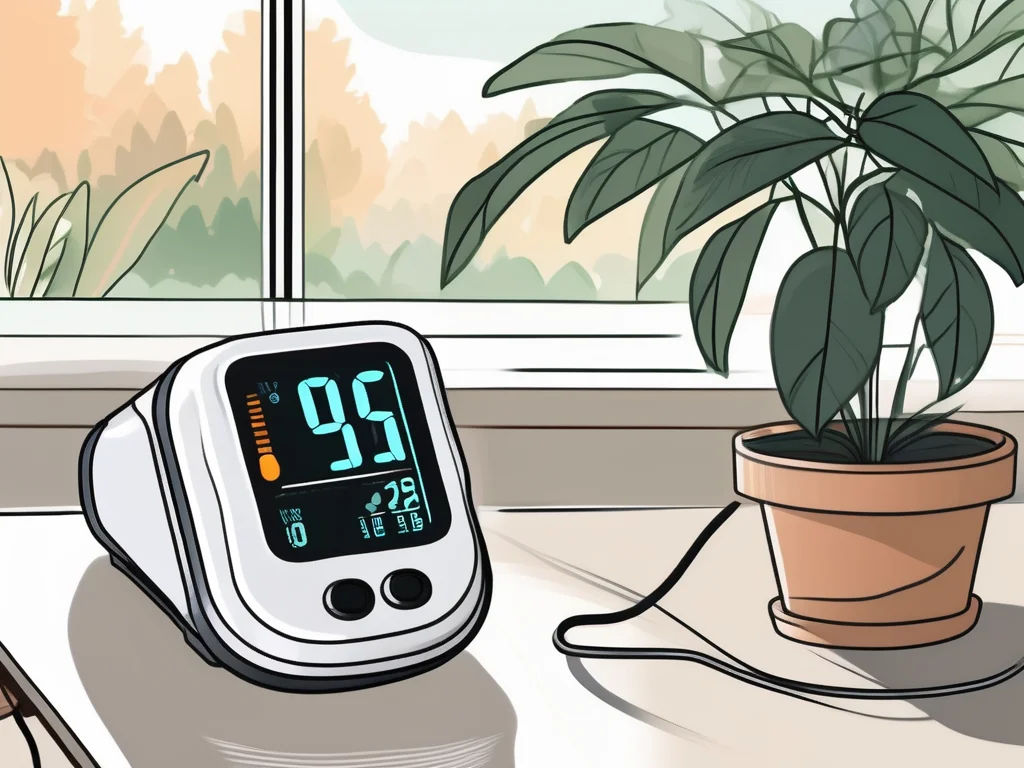In today’s fast-paced world, feeling short of breath despite normal oxygen levels can be confusing. A pulse oximeter might show a reading of 98%, yet breathlessness persists. This blog explores breathing techniques, causes of shortness of breath, factors affecting oxygen saturation, and when to seek medical help. We’ll also cover at-home strategies, medical evaluations, and treatments to enhance respiratory health, all while addressing common questions like “Why am I short of breath with normal oxygen levels?”
What Is Oxygen Saturation and Why Does It Matter?
Understanding Oxygen Saturation
Oxygen saturation measures the percentage of oxygen bound to hemoglobin in your blood, indicating how well oxygen is delivered to your organs. A normal range is 95% or higher, typically measured with a pulse oximeter. Low levels can signal issues like fatigue or organ damage, making it critical to monitor respiratory function.
Why Oxygen Is Vital for Health
Oxygen fuels energy production, supports brain function, and strengthens the immune system. Poor oxygen delivery can lead to symptoms like shortness of breath, weakness, or increased susceptibility to illness. Maintaining healthy oxygen levels is essential for overall well-being.
Common Causes of Shortness of Breath
Medical Conditions Causing Breathlessness
Shortness of breath, or dyspnea, can stem from various health issues, including:
- Chronic Obstructive Pulmonary Disease (COPD): A progressive lung condition causing breathing difficulties.
- Asthma: Chronic airway inflammation leading to wheezing and breathlessness.
- Pneumonia: Lung infection that impairs oxygen exchange.
- Heart Failure: Reduced heart pumping efficiency affects oxygen distribution.
- Pulmonary Embolism: A blood clot in the lungs restricts oxygen flow.
Lifestyle Factors Contributing to Dyspnea
Beyond medical conditions, lifestyle choices can trigger breathlessness:
- Smoking: Damages lungs, increasing risks of COPD and lung cancer.
- Air Pollution: Irritates airways, worsening breathing issues.
- Obesity: Excess weight strains the lungs and heart.
- Sedentary Lifestyle: Weakens respiratory muscles, reducing lung capacity.
Factors That Affect Oxygen Levels
Environmental Factors Impacting Oxygen
Your surroundings play a significant role in oxygen availability:
- High Altitudes: Thinner air reduces oxygen uptake, lowering saturation levels.
- Air Pollution: Harmful particles decrease air quality, affecting breathing.
- Chemical Exposure: Gases like carbon monoxide bind to hemoglobin, limiting oxygen transport.
Physiological Factors Influencing Oxygen
Internal conditions also affect oxygen levels:
- Anemia: Low hemoglobin reduces oxygen-carrying capacity, causing fatigue and breathlessness.
- Lung Infections: Inflammation or fluid buildup hinders oxygen exchange.
- Heart Conditions: Weak heart function impairs oxygen circulation.
When Should You Be Concerned About Shortness of Breath?
Warning Signs of Low Oxygen Levels
Seek immediate medical attention if breathlessness is accompanied by:
- Chest pain
- Rapid breathing
- Confusion
- Blue lips or fingertips
These symptoms may indicate hypoxemia, a serious condition requiring urgent care.
Assessing Breathlessness Severity
The intensity of shortness of breath varies. Mild cases may occur during exercise, while severe cases persist at rest. Discussing symptoms with a healthcare provider helps identify triggers and underlying causes for proper management.
At-Home Breathing Techniques for Better Health
Breathing Exercises to Boost Oxygenation
Try these techniques to improve lung function and reduce breathlessness:
- Diaphragmatic Breathing: Engage your diaphragm to deepen breaths, enhancing oxygen intake.
- How to: Lie down, place one hand on your chest and the other on your abdomen. Inhale deeply through your nose, letting your abdomen rise. Exhale slowly.
- Pursed Lip Breathing: Slows exhalation to keep airways open longer.
- How to: Inhale through your nose for two seconds, then exhale through pursed lips for four seconds.
- Paced Breathing: Syncs breathing with activity to reduce exertion-related breathlessness.
- How to: Inhale during less strenuous movements and exhale during effort.
Dietary Tips for Lung Health
A nutrient-rich diet supports respiratory function:
- Antioxidant-Rich Foods: Fruits and vegetables like berries and spinach reduce lung inflammation.
- Hydration: Drinking water thins airway mucus, easing breathing.
- Lean Proteins: Support muscle strength, including respiratory muscles.
Medical Evaluation for Persistent Breathlessness
If at-home measures don’t relieve shortness of breath, consult a healthcare provider. They may recommend:
- Lung Function Tests: Measure lung capacity and airflow.
- Blood Tests: Check for anemia or infection.
- Imaging Studies: X-rays or CT scans detect lung or heart issues.
- Electrocardiogram (ECG): Assesses heart function related to oxygen delivery.
These tests pinpoint the root cause, guiding effective treatment.
Treatment Options for Shortness of Breath
Treatment depends on the cause but may include:
- Medications: Bronchodilators for asthma, antibiotics for infections, or diuretics for heart failure.
- Lifestyle Changes: Quitting smoking, weight management, and regular exercise.
- Pulmonary Rehabilitation: Structured programs to improve lung function.
- Surgical Interventions: In severe cases, procedures like lung volume reduction may be needed.
Work with your doctor to create a personalized plan for long-term relief.
FAQs About Shortness of Breath and Oxygen Levels
Why do I feel short of breath with normal oxygen levels?
Normal oxygen saturation doesn’t always reflect respiratory efficiency. Conditions like anxiety, poor lung mechanics, or heart issues can cause breathlessness despite high readings.
How can I improve my oxygen levels at home?
Practice breathing exercises, stay hydrated, eat a balanced diet, and avoid smoking or polluted environments.
When is shortness of breath an emergency?
Seek immediate care if breathlessness comes with chest pain, confusion, or blue discoloration of lips or fingertips.
Can lifestyle changes reduce breathlessness?
Yes, quitting smoking, maintaining a healthy weight, and staying active can significantly improve respiratory health.
Conclusion
Feeling short of breath despite normal oxygen levels can be frustrating, but understanding its causes and solutions empowers you to take control. Breathing techniques like diaphragmatic and pursed lip breathing, combined with a healthy diet and lifestyle changes, can enhance lung function and oxygenation. If symptoms persist, medical evaluation is crucial to identify underlying issues like COPD, asthma, or heart conditions. By addressing warning signs and working with healthcare providers, you can improve your respiratory health and quality of life.



